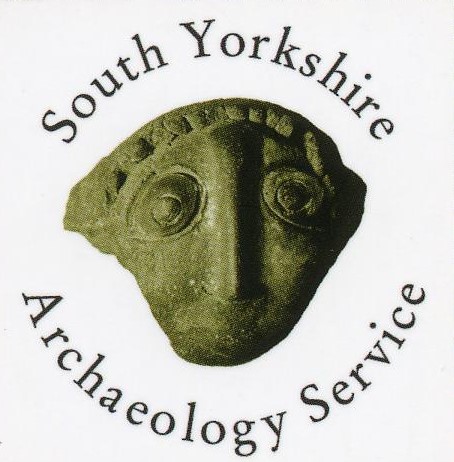Nether Cut Wheel (Rivelin Waterpower Sites)
Location/Address
Immediately downstream of Glen Bridge, Rivelin Valley, Sheffield S6 5SF
Type
Other site, structure or landscape
Assets that cannot fit any of the other categories. This category includes sites of archaeological interest, where the original form and function may not be apparent without the use of archaeological techniques and interpretation.
Description
Former water-powered grinding Wheel and water management system. One of the Rivelin Waterpower Sites. Also known as "New" or "Kay" Wheel.
Nether Cut Wheel and associated water management system are the remains of a water-powered mill site dating from around 1719. It is the last mill in the valley to be worked by waterwheel – grinding continued there until at least 1939, making it one of the few in the valley to have been working in living memory. The building was demolished as late as 1956 and all traces of it were removed.
The water management system extends to the north-east and south-west of the site of the former mill buildings. Nether Cut Wheel is one of a few in the valley that had no weir – the mill dam was fed directly via the tail goit from Upper Cut, now running through a tunnel under Rivelin Valley Road. The large mill dam still holds water and is quite open. The tail goit runs into the head goit of Little London Wheel (next downstream).
The Nether Cut Wheel site is located close to Glen Bridge, on the downstream side of the S-bend on Rivelin Valley Road. The site is owned by Sheffield City Council and there is open access. A public footpath (the Rivelin nature and heritage trail) passes the site. The trail can be accessed from various points along Rivelin Valley Road, and surrounding footpaths.
A marker post installed at the site by Rivelin Valley Conservation Group gives a brief history and links to a website where further information and pictures can be found.
Nether Cut Wheel is one of the 20 water-powered mills built in the Rivelin Valley. This sequence of Rivelin mills and mill dams forms an essential part of Sheffield’s heritage. They also have a broader national and even international significance in relation to the history of the Industrial Revolution in Sheffield.
Further information and pictures of Nether Cut Wheel and other sites in the Rivelin valley can be found at https://rivelinvalley.org.uk/rivelin-trails-2/. See also the books ‘Walking the Rivelin’, by Sue Shaw and Keith Kendall (6th edition, 2019, Rivelin Valley Conservation Group) and ‘Water Power on the Sheffield Rivers’, by C. Ball, D. Crossley, N. Flavell (Editors), (2nd Edition (2006), South Yorkshire Industrial Society).
Statement of Significance
Age
Dating from around 1719. It is the last mill in the valley to be worked by waterwheel – grinding continued there until at least 1939, making it one of the few in the valley to have been working in living memory.Rarity
This asset is an integral part of an especially rare system of waterpowered sites, described in more detail in the Rivelin Waterpower Sites asset.Architectural and Artistic Interest
This site is one of a group that collectively and individually demonstrate the construction techniques and interrelationships of waterpowered sites, described in more detail in the Rivelin Waterpower Sites asset. There is no weir at Nether Cut Wheel – water feeds into the head goit directly from the outfall of Nether Cut Wheel (next upstream) thereby linking the two sites directly. The tail goit of Nether Cut Wheel runs into the head goit of Little London Wheel (next downstream). These are techniques used to enable high density exploitation of a river that is especially characteristic of upland streams such as those in Sheffield during a period of unprecedented industrialisation.Group Value
This site contributes to the significance of the Rivelin Waterpower Sites asset and to the waterpower sites on other rivers in the city, and is integral to an understanding of the role and impact of waterpower in Sheffield. Upper Cut and Nether Cut Wheels have additional group value, owing to the use of a single weir for both sites. Nether Cut and Little London Wheels have group value as the tail goit of the former feeds the head goit of the latter directly.Historic Interest
This site is of historic interest in its illustration of the uses of waterpower, central to the reputation fame and identity of Sheffield; the many and varied uses for waterpower; the industrial development of the area; the impact of communications and topography; the lives and trades of working people; and the practice and policy of landowners, This is described in more detail in the Rivelin Waterpower Sites asset. Subject of a rattening attack in 1874. This was a comparatively late incident, occurring after the Sheffield Outrages had resulted in a Royal Commission and new legislation.Archaeological Interest
This site has the potential for underground remains that with further investigation could reveal their development over time, including changes of use and the evolution of industrial processes and construction techniques. Because the sites were not overtaken by later industrial development, any remains are likely to be relatively intact.Landmark Status
The Rivelin Valley is an extremely popular leisure destination for local people, largely defined by its waterpower remains, including this site. Nether Cut Wheel dam is used for recreational fishing, making it an especially popular leisure destination.Date Listed
15 Aug 2022
Last Updated
19 Apr 2022
Comments and Feedback
Do you have any questions or more information about this record?



.jpg)

